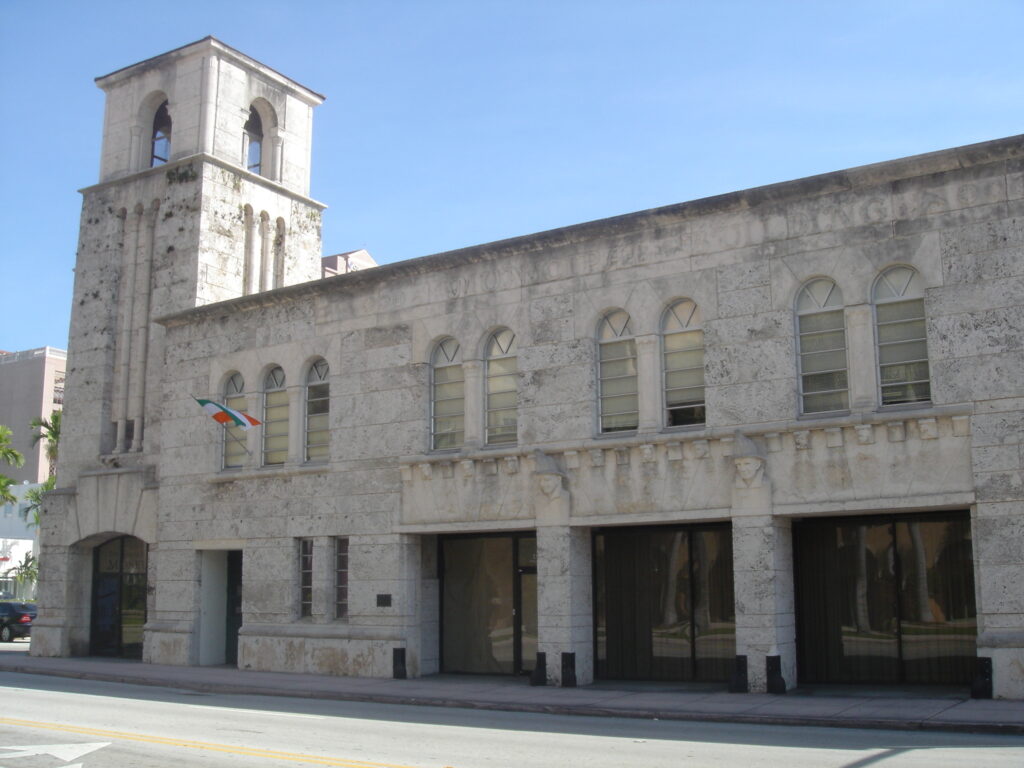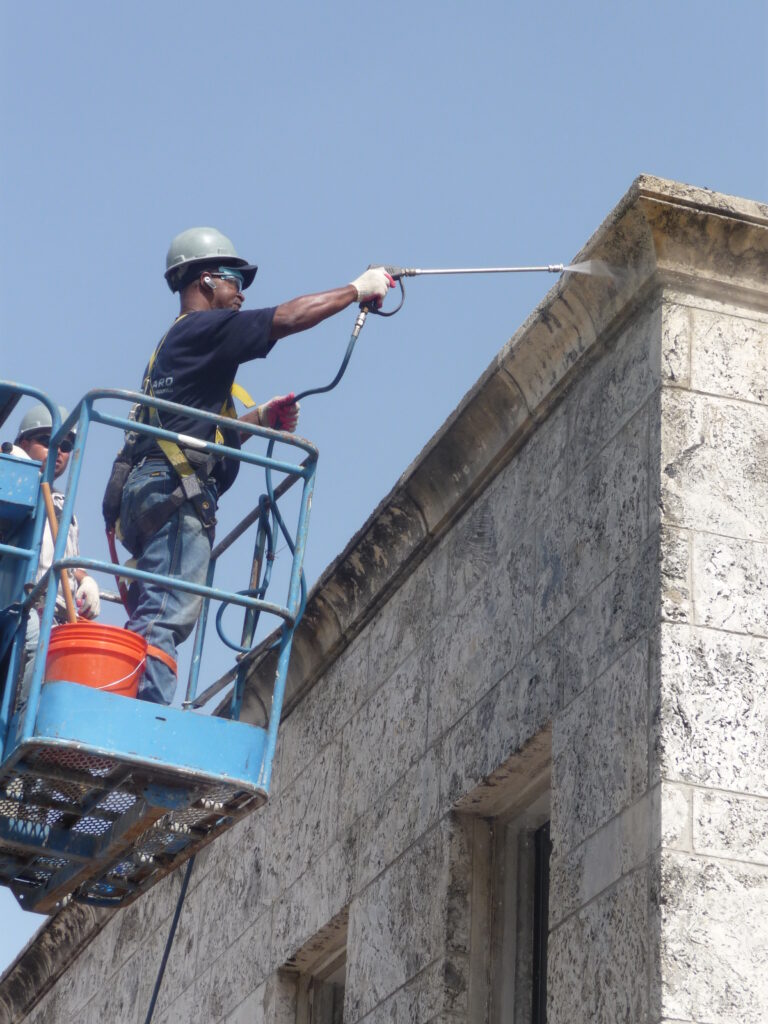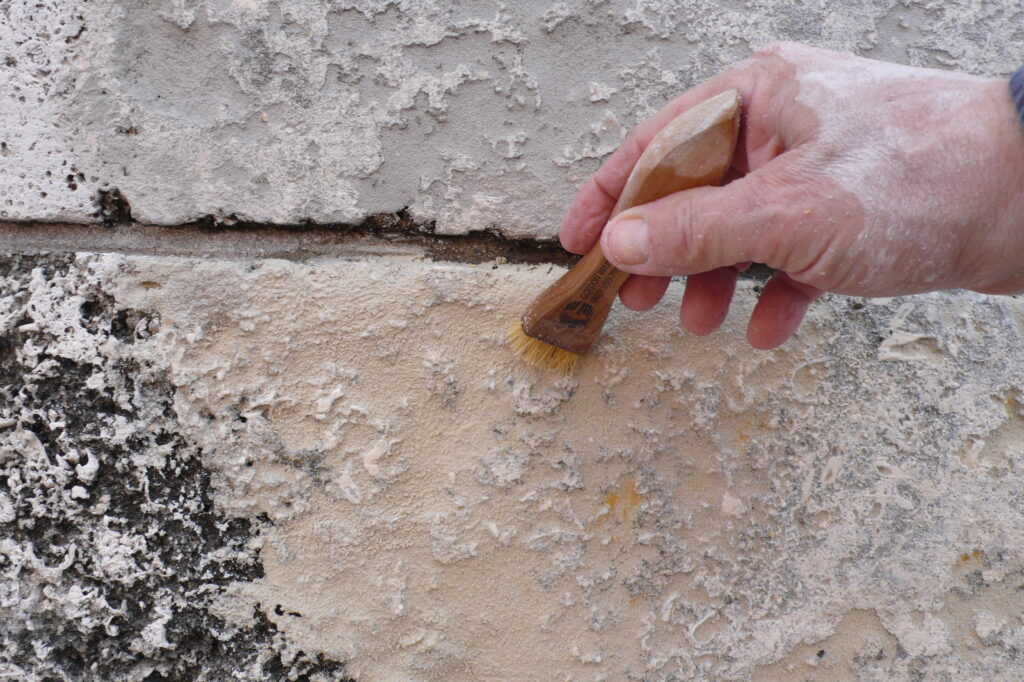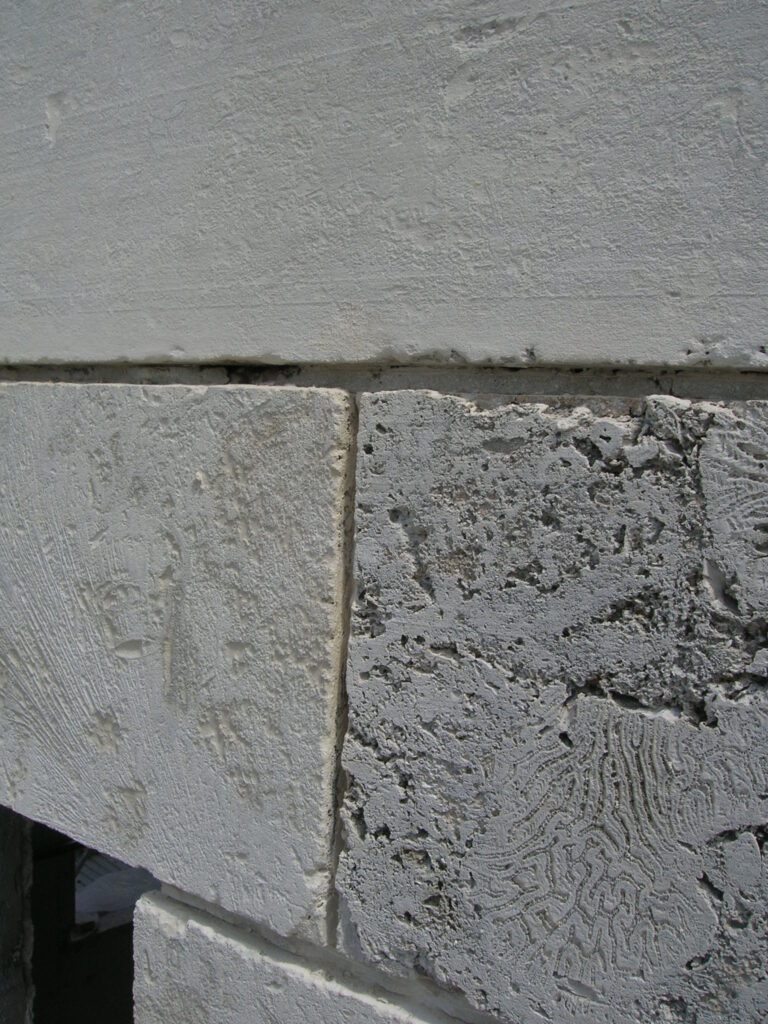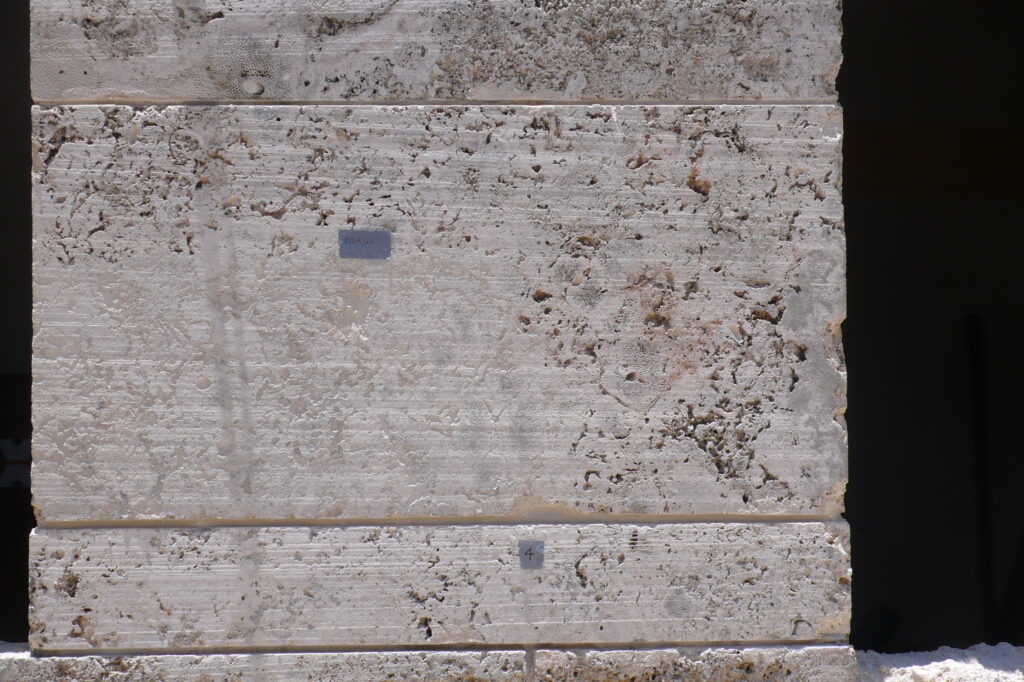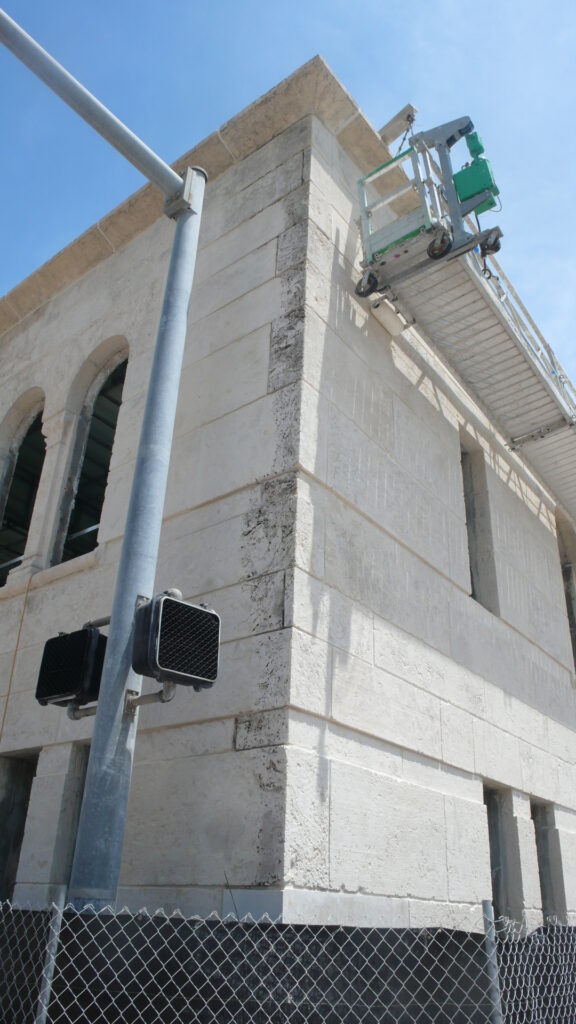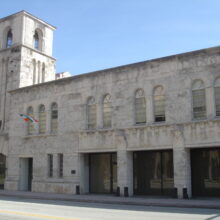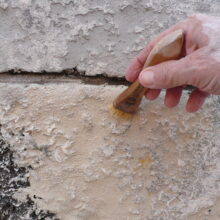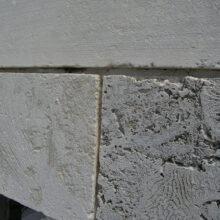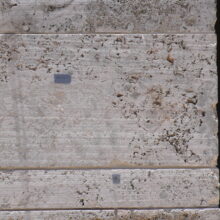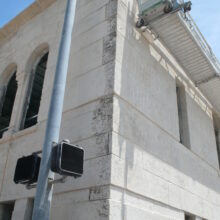Coral Gables Museum
Coral Gables, “The City Beautiful” was planned and developed during Miami’s land boom in the 1920’s and immediately became an icon of the good life that Florida promised. The Coral Gables Fire and Police Station was built to a design by Phineas Paist, one of the original architects of the town, in 1936. The unique solid ashlar coral stone structure is embellished with exterior busts and brackets in cast stone and interior Cuban Tile elements (decorative pre-cast concrete panels). This National Historic Landmark is being restored and updated to serve as the Coral Gables Museum.
The conversion represents a challenge to the project designers. The coral stone and interior Cuban tiles have deteriorated noticeably due to moisture infiltration. The porous nature of the stone makes the museum’s goal of providing climate controlled exhibition grade spaces particularly challenging. The stone’s unusual texture, along with its predilection for staying moist, also made the exterior extremely hospitable the accumulation of soiling, biological and substantial vegetative growth.
Our conservators were contracted to assist in the development of plans to restore the building’s masonry structure. All exterior coral stone blocks were surveyed and assessed. Causes of the observed conditions were analyzed and recommendations for treating the conditions were made. A series of treatment mock-ups followed. These demonstrated various possible solutions, including: lime-based fills to limit water infiltration through the coral stone ashlar; removal of non-historic coatings; scagliola repair to the unique Cuban Tile wainscoting; and selective finishes probes to reveal historic graffiti in the jail cells.
We were then contracted to help restore the masonry structure. All exterior surfaces were cleaned to remove soiling, biota and vegetation. Ferrous and other inappropriate anchors were removed and patched. Losses to cast stone units were rebuilt and sculpted to match the existing. Following extensive development and refinement, a lime-based parge was applied to all exterior stone surfaces to limit water infiltration through the porous ashlar units. The fills were designed to complement the specific physical characteristics of the stone, while remaining sufficiently recessed so that the unique coral texture remained legible. Low toxicity and natural products were emphasized in this LEED-certified project.

